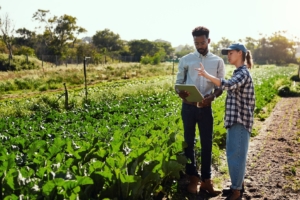The Economic Opportunities And Challenges Of Rural Living In India

Rural living in India presents a unique set of economic opportunities and challenges. On one hand, the countryside is home to a significant portion of the population and offers a diverse range of economic activities such as agriculture, forestry, and small-scale industries. On the other hand, rural areas often face challenges such as limited access to markets and financial services, inadequate infrastructure, and a lack of skilled labor.
Economic Opportunities
Agriculture is the backbone of the Indian economy, and rural areas are home to a significant proportion of the country’s farmers. According to a report by the National Sample Survey Office (NSSO), around 58% of the Indian workforce is engaged in agriculture and allied activities. Agriculture provides income and employment opportunities for rural households and also plays a crucial role in food security and rural development.

Rural areas also offer opportunities for small-scale industries, such as cottage industries and handicrafts. These industries often rely on locally available resources, such as natural fibers and minerals, and provide income and employment opportunities for rural households. According to a report by the Ministry of Micro, Small and Medium Enterprises, small-scale industries employ around 60 million people in India.
Rural tourism is another economic opportunity for rural areas. Rural tourism can provide income and employment opportunities for local communities and also promote cultural preservation and environmental conservation. According to a report by the World Tourism Organization, rural tourism has the potential to generate income and employment opportunities for local communities, and also promote cultural preservation and environmental conservation.
Economic Challenges
One of the major challenges facing rural areas in India is limited access to markets and financial services. This can make it difficult for farmers and small-scale industries to sell their products and access credit. According to a report by the World Bank, around 60% of rural households in India are not connected to formal financial services.
Infrastructure is also a major challenge in rural areas. Poor roads, lack of electricity and clean water, and inadequate healthcare and education facilities can make it difficult for businesses to operate and for people to access basic services. According to a report by the National Sample Survey Office (NSSO), around 80% of rural households in India do not have access to safe drinking water, and around 70% do not have access to electricity.
Another challenge facing rural areas is a lack of skilled labor. According to a report by the National Sample Survey Office (NSSO), the literacy rate in rural India is just over 70%, compared to over 80% in urban India. This highlights the need for increased access to education and training in rural areas in order to improve the skills of the rural workforce and make them more attractive to potential employers.
Solutions
Despite these challenges, there are a number of solutions that can help to improve the economic opportunities and challenges of rural living in India. One solution is to increase access to markets and financial services through government programs and policies that provide funding and incentives for building infrastructure and connecting rural areas to markets and financial services.
Another solution is to improve infrastructure in rural areas through government programs and policies that provide funding for building and maintaining roads, electricity, and clean water facilities.
Improving the education and skills of the rural workforce is also crucial. This can be done by providing access to education and training through government programs and policies, as well as through partnerships with private companies and non-profit organizations. This can help to improve the skills of the rural workforce and make them more attractive to potential employers.
Involving the community in the economic development process is also important. Community-based organizations and local leaders can play an important role in promoting economic opportunities and encouraging investment in rural areas. They can also help to provide support and resources for small businesses and entrepreneurs.
Finally, promoting sustainable economic activities, such as eco-tourism, organic farming, and sustainable forestry can provide long-term benefits for rural communities and also help to preserve natural resources.
In conclusion, rural living in India presents a unique set of economic opportunities and challenges. Agriculture, small-scale industries, and rural tourism are some of the main sources of income and employment in rural areas. However, these areas also face challenges such as limited access to markets and financial services, inadequate infrastructure, and a lack of skilled labor.
To improve the economic opportunities and challenges of rural living in India, it is important to increase access to markets and financial services, improve infrastructure, and improve the education and skills of the rural workforce. Additionally, involving the community in the economic development process and promoting sustainable economic activities can help to ensure the long-term success and sustainability of rural economies.





